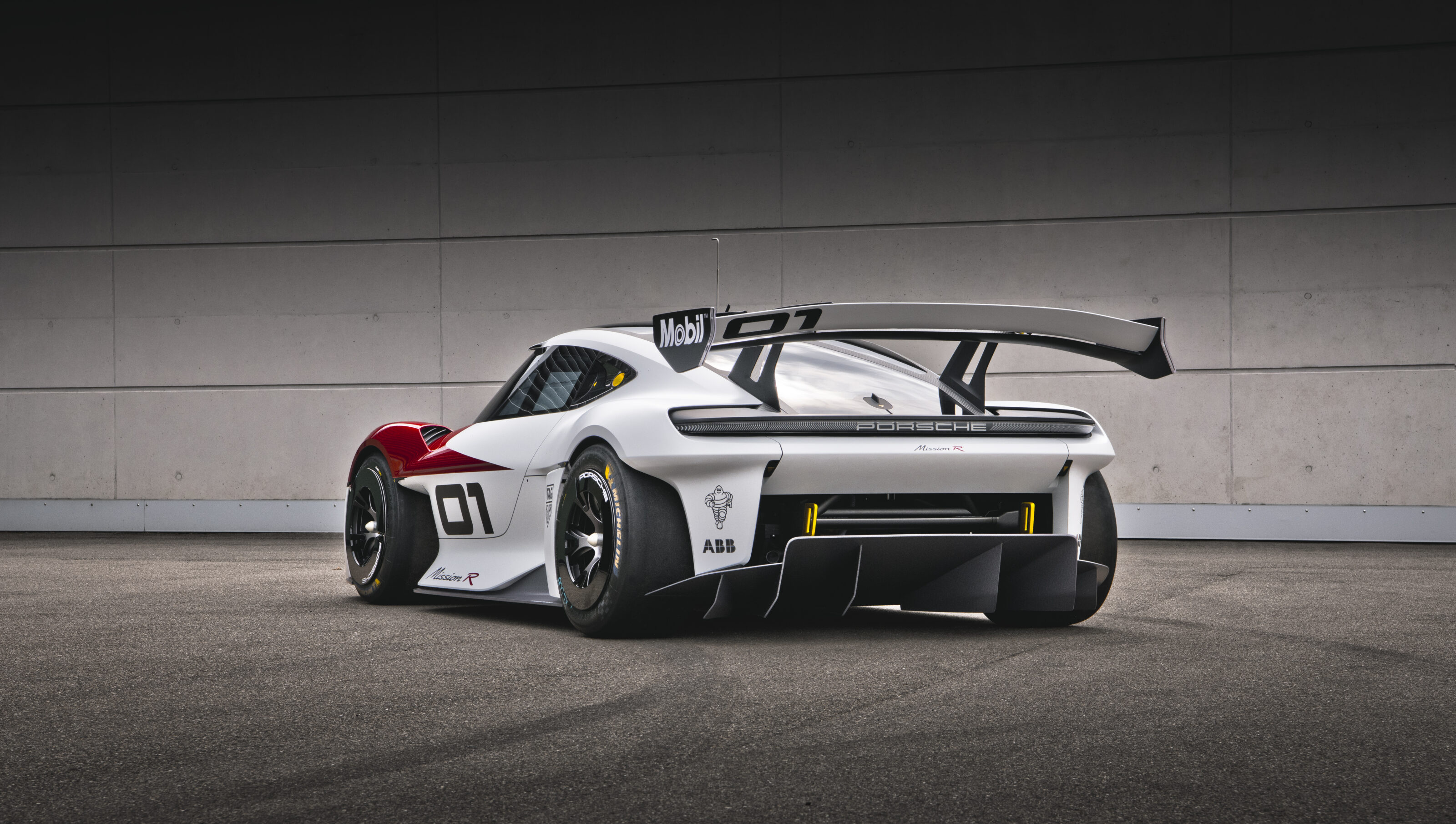The 2023 Porsche Cayman will be offered with an electric powertrain, following the path of the electric Taycan, Taycan Cross and forthcoming Macan BEV as the brand heads towards its goal of half of its new-vehicle sales made up of EVs by 2025 – and 80 percent by 2030.
The Porsche Mission R concept revealed at the IAA Motor Show in Munich teases an extreme version of the direction the next-generation Porsche Cayman EV will take when it hits showrooms in 2023.
Porsche has spoken publicly about a fully electric version of the next Cayman, which continues the 718 designation, since 2019, with chairman Oliver Blume citing battery weight and packaging as the biggest hurdles.
Now, with Mission R, the path to electrification looks set, with an electric Cayman to rival the second-gen Tesla Roadster, also due in 2023, and BMW’s G42 iM2 EV that’s expected to launch next year.
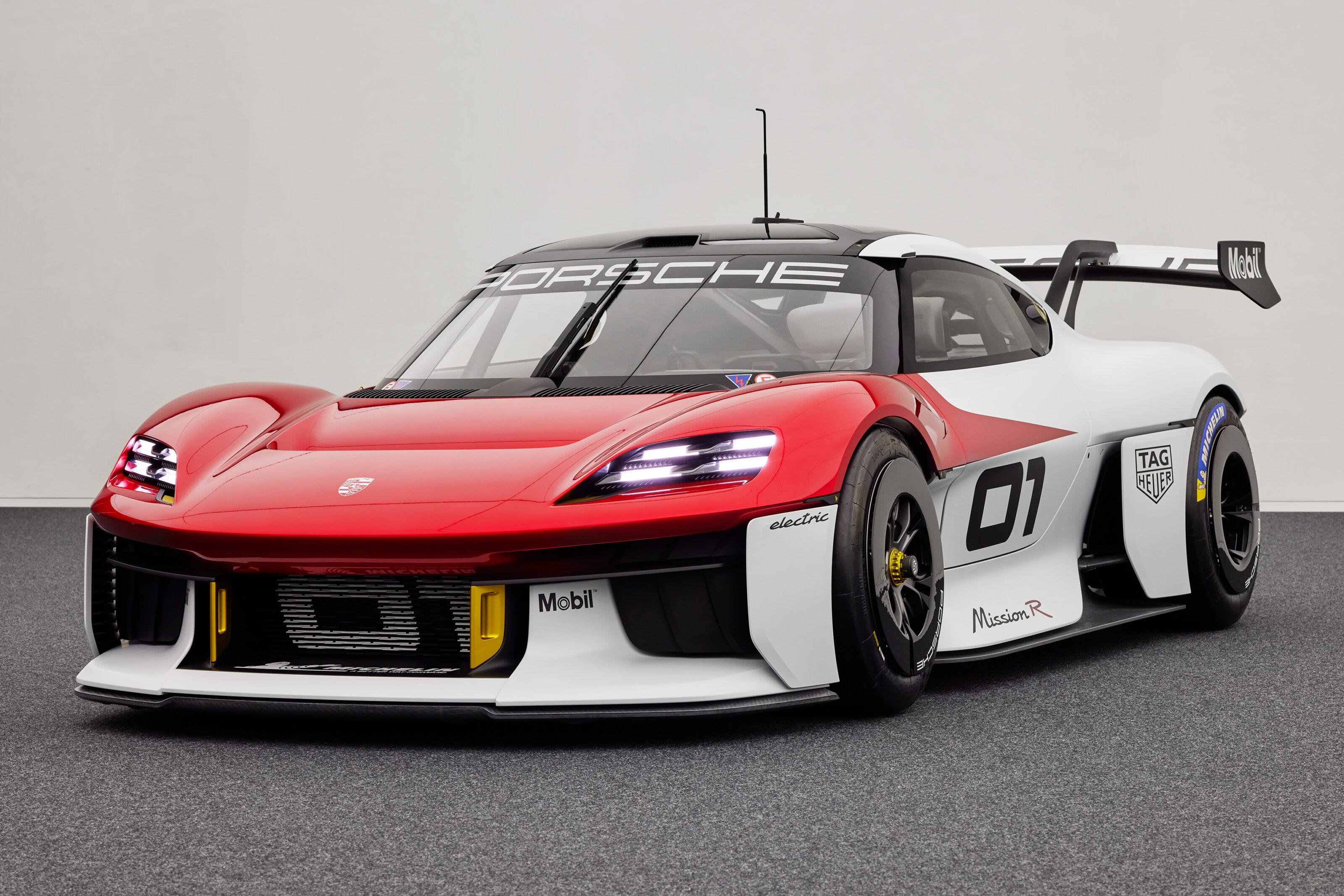
The Mission R is a two-seat, two-door concept study that ‘previews’ a newly developed powertrain. It consists of two electric motors and an 80kWh battery pack – all of which are oil-cooled – to deliver a consistent 500kW, rising to a staggering 800kW in ‘qualifying mode’, a reference to Porsche’s Formula E participation since 2019.
The front axle benefits from a 320kW motor, while a 480kW unit is fitted at the rear, offering all-wheel drive and claimed 0-100km/h acceleration of ‘less than’ 2.5sec. Porsche says that Mission R can match the current 911 GT3 Cup car around a racetrack, presumably its Weissach test layout.
Charging is fast, too, says Porsche, courtesy of 900-volt technology that enables the pack to be recharged from five to 80 percent capacity in 15 minutes. For the brand more broadly, that kind of ability will be critical for sports car customers who do track days with their vehicles.
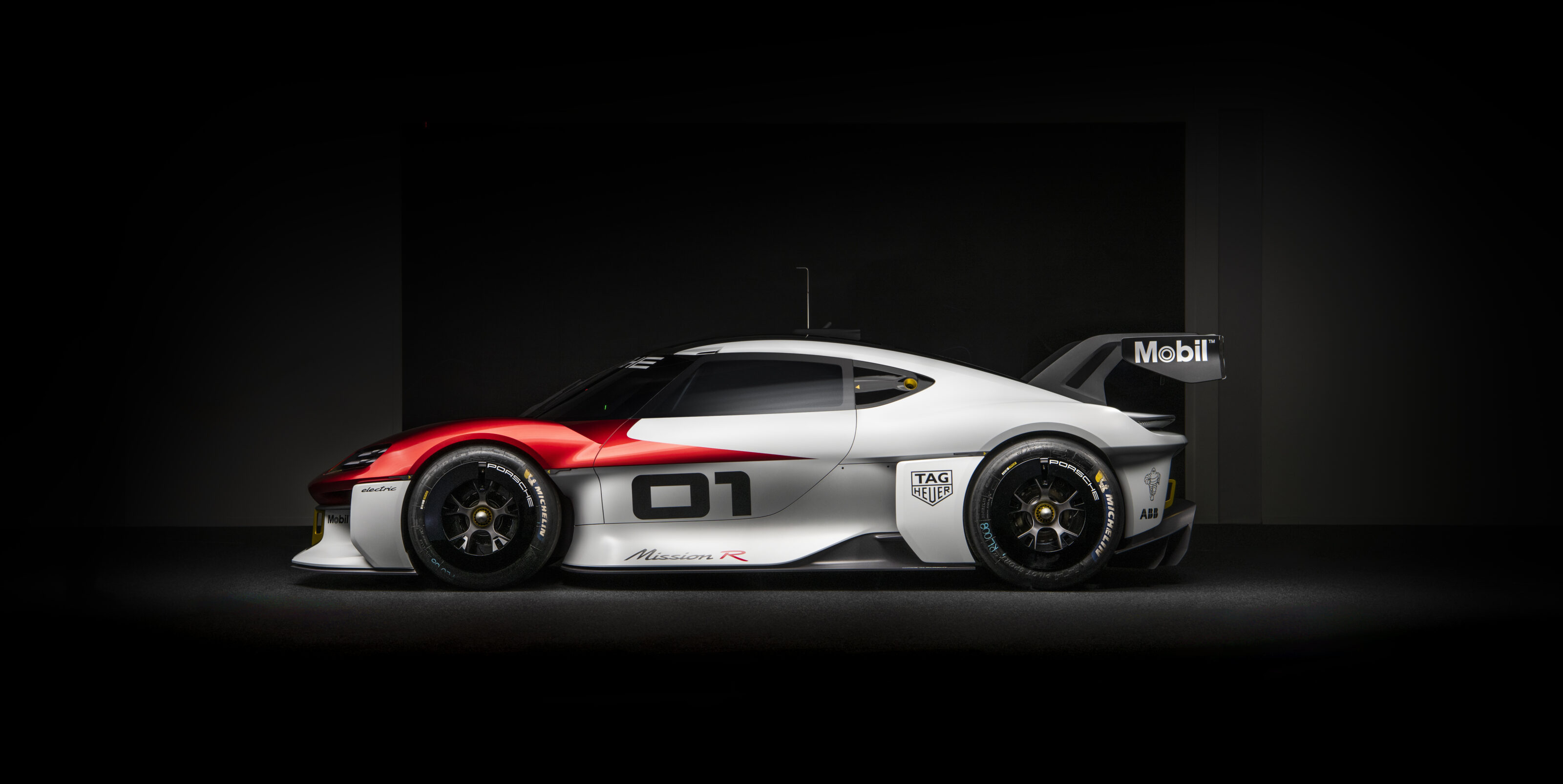
Porsche hasn’t shared weight figures, yet there’s a clear effort to limit Mission R’s heft.
Porsche hasn’t shared weight figures, yet there’s a clear effort to limit Mission R’s heft. A body made of natural fibres sits on a carbonfibre safety cell and ‘exoskeleton’ that combines with a transparent roof. There’s also active aero and a drag reduction system on the nose and large rear wing. That quarter-window suspiciously Cayman-like, too…
Stuttgart goes so far as to compare the Mission R to the current 718 Cayman, with the concept ‘slightly shorter’ than the 4379mm road car, 99mm wider at 1990mm and 105mm lower at 1190mm.
Referencing the 2015 Mission E and 2018 Mission E Cross Turismo concepts, which became the Taycan and Taycan Cross Turismo production models, the carmaker says, “Porsche has given unmistakable previews of its first all-electric sports car model series to come”. This is as close as it has come to confirmation a fully electric Cayman is on the way.
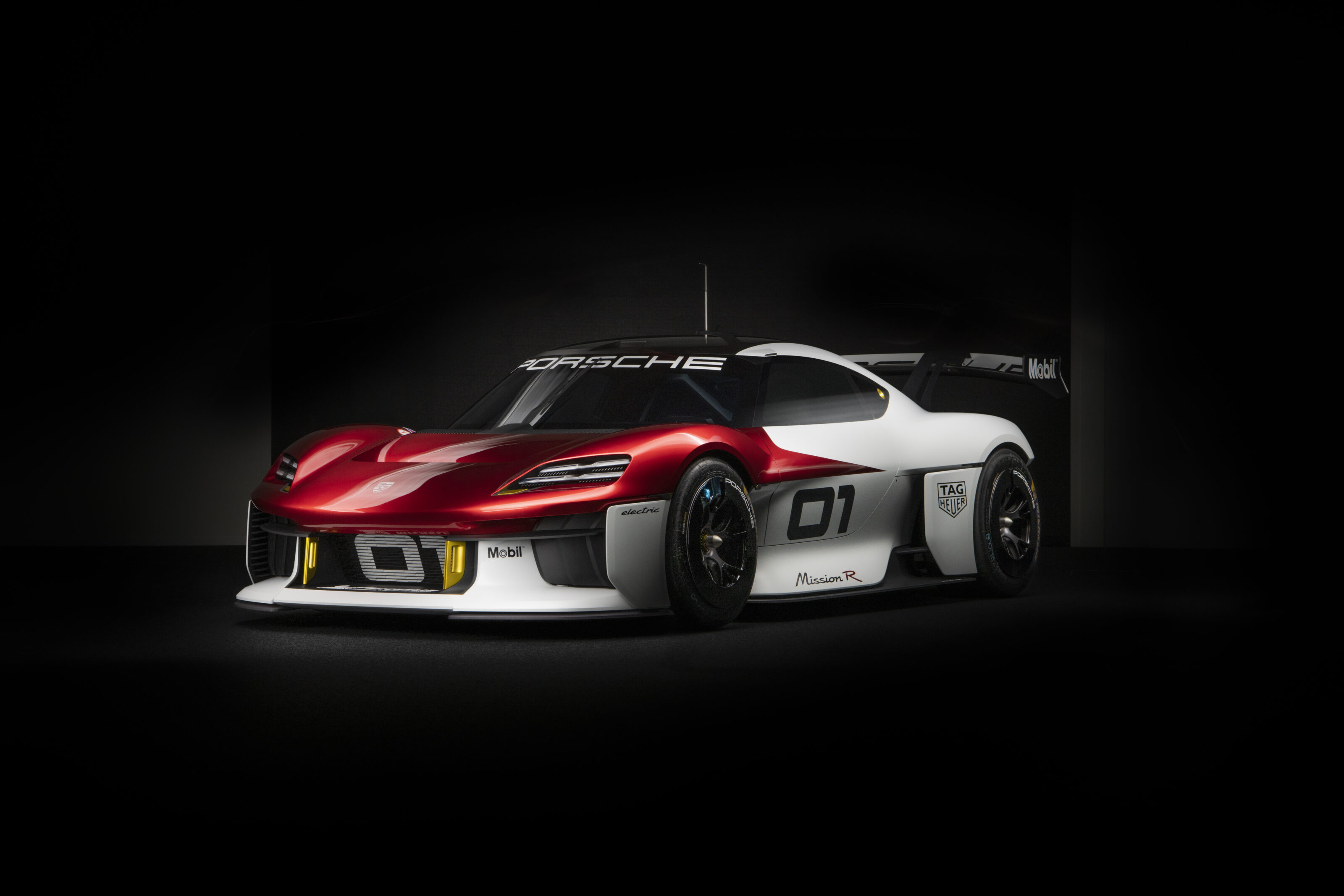
Part of the hesitation in producing an electric Cayman stems from the declining appetite for traditional sports cars, contributing to the 718 twin’s minor share of 7.75 percent (11,922 units) of Porsche global sales in H1, 2021.
Yet the upshot of EV performance models has clearly been demonstrated with Taycan, which chalked up 19,822 sales over the same period for a 12.9 percent slice of the Porsche pie, snapping at the heels of the 911.
The other challenge is achieving an acceptable range through battery technology and finding a way to package it within the 718’s architecture without a significant cost blowout. The volume simply isn’t there for the investment in a new platform, such as the stand-alone J1 underneath the Taycan.
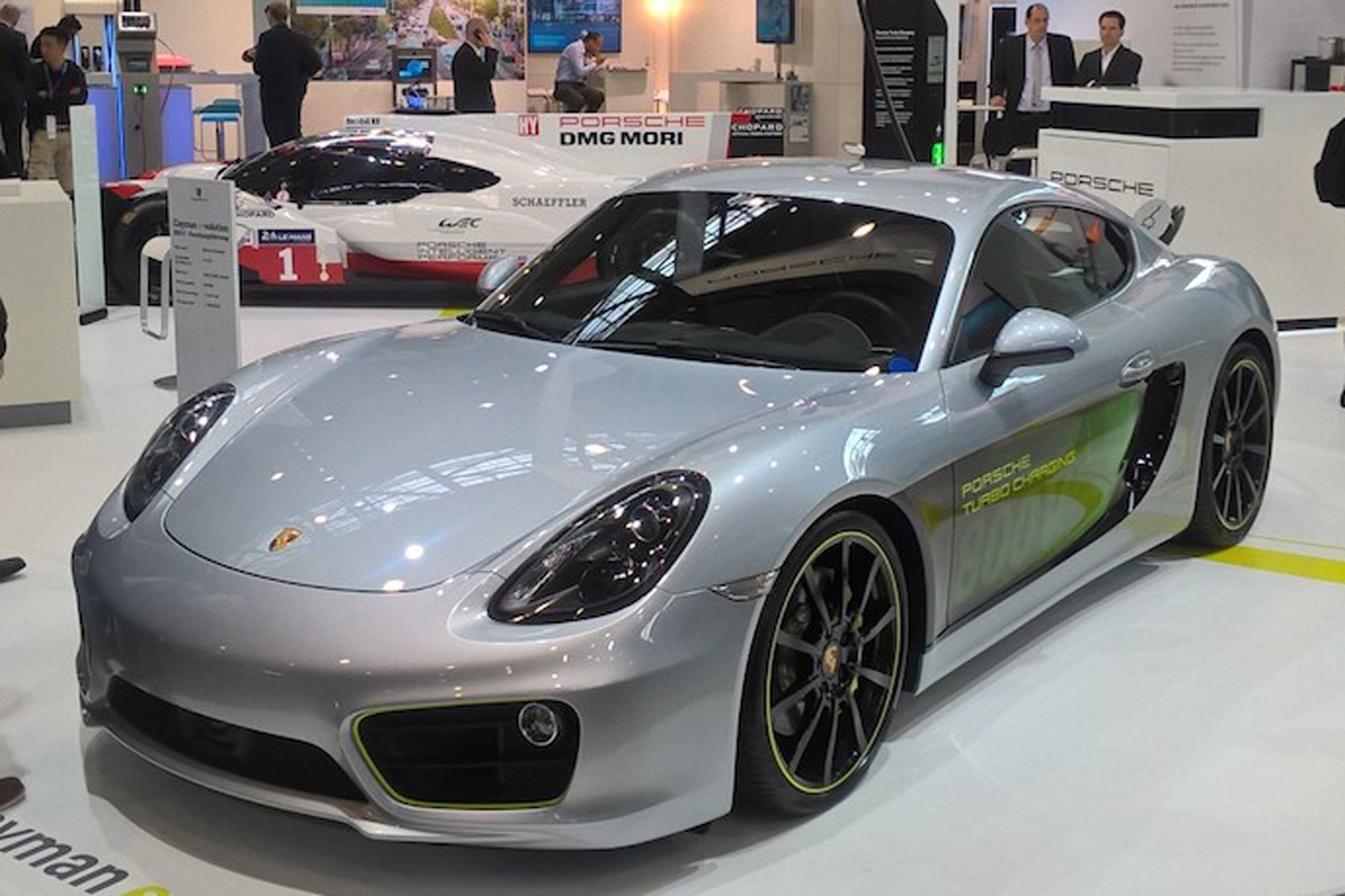
A fully electric Cayman would require significant investment in a heavily revised version of the MMB (Modular Mid-Engine) platform that the new 718 and existing 992 911 use, with a 911 hybrid recently seen testing ahead of its 2023 arrival.
The alternative may be a modified version of the VW Group’s PPE (Premium Platform Electric) which is used by the Macan EV while the rest of the Macan line-up uses the MLP underpinnings.
This could see Cayman follow the same strategy as Macan, with a Cayman EV upon PPE alongside hybrid/ICE versions that use the MMB platform, tapping into the hybrid 911’s components where possible to keep within 718’s price point and sate traditional buyers.
Keeping internal combustion of some sort would give Porsche an each-way bet and have little impact on the brand’s overall EV targets. These can easily be met with the electric Macan, due in 2022, and electrified Cayenne arriving in 2025. Together, the two SUVs make up the lion’s share (57 percent) of Porsche’s global volume.

Path to power: The Cayman’s EV evolution
2011 Boxster E
Boxster E RWD used a 90kW rear axle motor for a lethargic 9.8sec 0-100km/h, AWD added front axle motor for 180kW and more Porsche-like 5.5sec despite additional 341kg. Range just 170km from 29kWh lithium-ion battery after nine-hour 240v charge. Three built.
2017 Cayman E-volution
Evolution indeed: Cayman E-volution showcased to promote swift 800-volt ‘Porsche Turbo Charging’, a JV between Porsche, Audi, BMW, Daimler and Ford. E-volution’s AWD and 38kWh lithium-ion battery pack saw 199km range with 0-100km/h in a Cayman S-beating 3.3sec.
2021 Mission R
Whopping 800kW peak power, AWD and 0-100km/h in 2.5sec. Rapid replenishment thanks to 900-volt charging capability of 80kWh battery. Range and weight not disclosed but bet on Taycan-like (or better) 350-400km between e-drinks, with 80 percent charge in 15 minutes.
We recommend
-
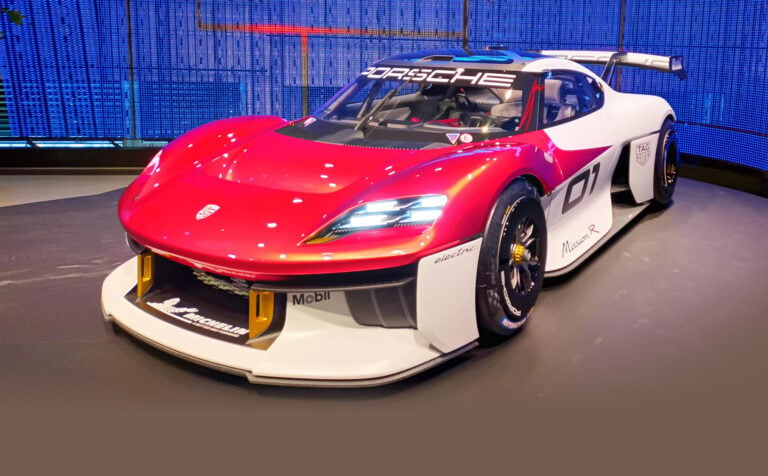 News
NewsPorsche Mission R – 13 fast facts
Porsche Mission R project leader gives us an exclusive behind the scenes tour
-
 News
NewsPorsche launches Mission R motorsport concept study at IAA
All-electric concept takes inspiration from Stuttgart's storied racing pedigree
-
 News
NewsPorsche Mission R hints at electric 2022 Cayman
Munich show car will evolve into first electric Porsche Cayman

